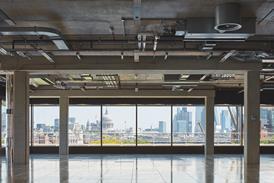It is timely then that the UK government has announced a list of the organisations taking part in its Emissions Trading Scheme (ETS), which is due to kick-off on 2 April.
The scheme, often referred to as carbon trading due to CO2 being the main greenhouse gas, is part of the UK Climate Change Programme and requires participants to sign-up to binding emission reduction targets over a five year period. Participants will be able to buy and sell their emissions quotas so as to meet their target at minimum cost – thereby having the choice of reducing emissions themselves or alternatively buying surplus allowances from other participating organisations.
Allowances can also be saved for use against future annual targets in the scheme, and a company's own reductions can be banked beyond the end of the scheme and into the Kyoto commitment period, 2008 – 2012.
The government believes the national scheme will provide companies with invaluable experience of emissions trading at a national level, putting the UK in a good position when global trading begins.
Direct participants will be required to make reductions against their 1998-2000 emission levels and to help things along the government has made £215 million of incentive payments available – with a maximum £43 million payout to any single company.
The targets, which are 11% on average from baseline, and the £53/tonne of CO2 were set through the auction which took place on 11-12 March. Each company bid in absolute levels of emission reduction at progressively lower prices to meet the governments objective of obtaining the maximum level of reductions for the incentive money. These organisations must now meet each of five annual targets in order to earn their share of the incentive pot.
Companies which already have emission or energy targets set through the Climate Change Agreements will be able to use trading to help meet their targets or sell any over-achievement if they surpass them. However many of the levels set through the agreement are defined relative to levels of output, so trading by these companies will be subject to certain restrictions.
Companies will also be able to undertake specific emission-reduction UK-based projects and sell the resulting credits into the scheme. These credits can then be used by companies with caps to meet their targets. A project cannot cover emissions already covered by other targets.
Successful bidders
DEFRA has announced that 34 organisations were successful in the bidding. These firms, which include the likes of BP, Ford Motor Company, Blue Circle and Shell, represent around 4 million tonnes, or just over 5%, of the planned reduction in the UK's annual emissions by 2010.
However with energy use in buildings accounting for some 45% of of the UK's total CO2 emissions and only around a third of the organisations representing companies in the building and property sector there is perhaps something of an imbalance in relation to the manufacturing and processing companies on the list.
"Since the running costs of the buildings themselves make up only a small percentage of a typical company's costs , usually less than 5%, they rarely see it as a core business issue and so are unlikely to either invest in carbon reducing technologies or to enter into the emissions trading scheme," says Guy Battle of Battle McCarthy.
Despite this Battle McCarthy sees the need for the property industry to engage with the process of carbon management, not only in response to government objectives but also to assess the potential liabilities, or opportunities, that the carbon account will have. To this end it has worked with 10 companies and property holders to enter them into the newly emerging market.
Land Securities has entered part of its portfolio into the scheme. According to Dave Farebrother, Environment/Energy manager, this accounts for base level of emissions of just over 27600 tonnes of CO2. "We're looking to reduce this by 1% a year over the next 5 years," he says and is confident that this can be met through general good housekeeping. "This will be achieved by improved energy management control, we'll be looking closely at electricity and gas usage, as well as running times" he adds.
Supermarket chains including Asda, Somerfield and Tesco also appear on the list. They are probably in a better position than most to achieve reductions, given that their philosophy for common building design will be more suited to bulk simple solutions.
One possible hurdle holding back companies is the issue of emissions data, which needs verification by an independent accredited company. The number of such companies currently operating is relatively low, although it will undoubtably grow given time bringing down the cost.
At the end of the day the wealthy manufacturing and industrial processing industries will boost their image by being part of the scheme, but it is building owners who have the potential to deliver the biggest overall reductions.
Source
Building Sustainable Design





















No comments yet